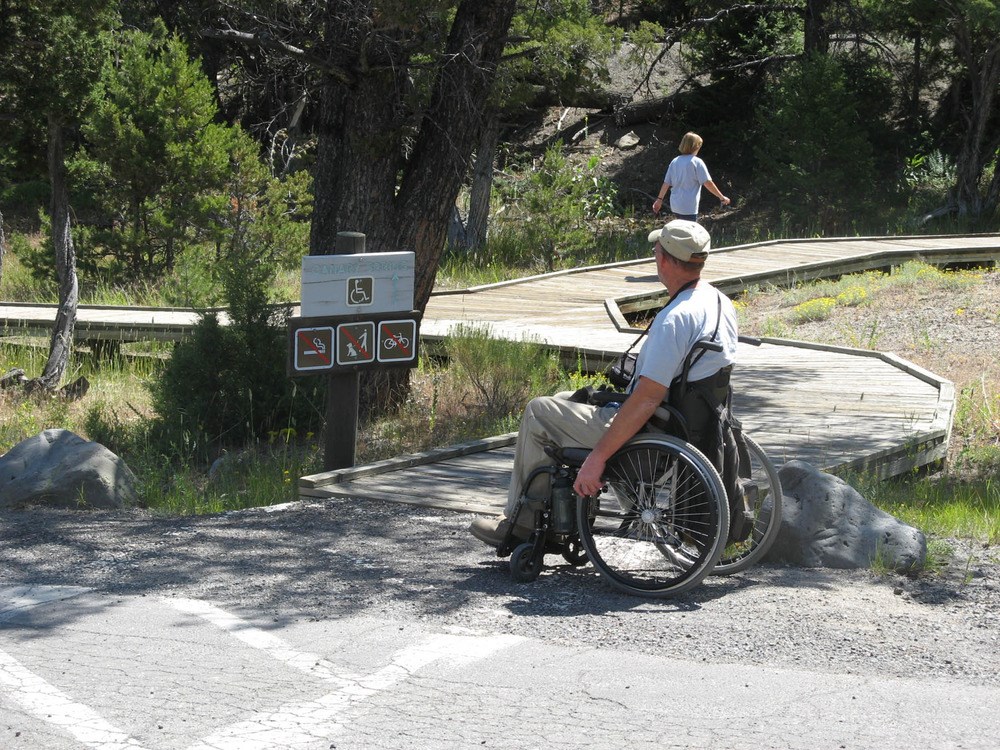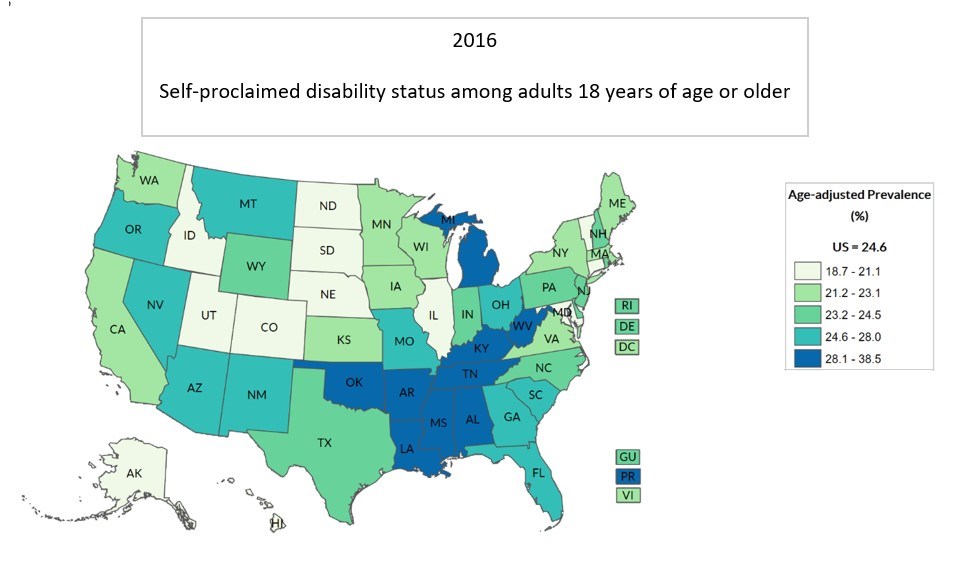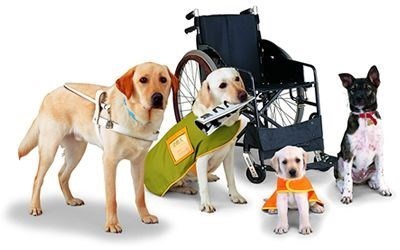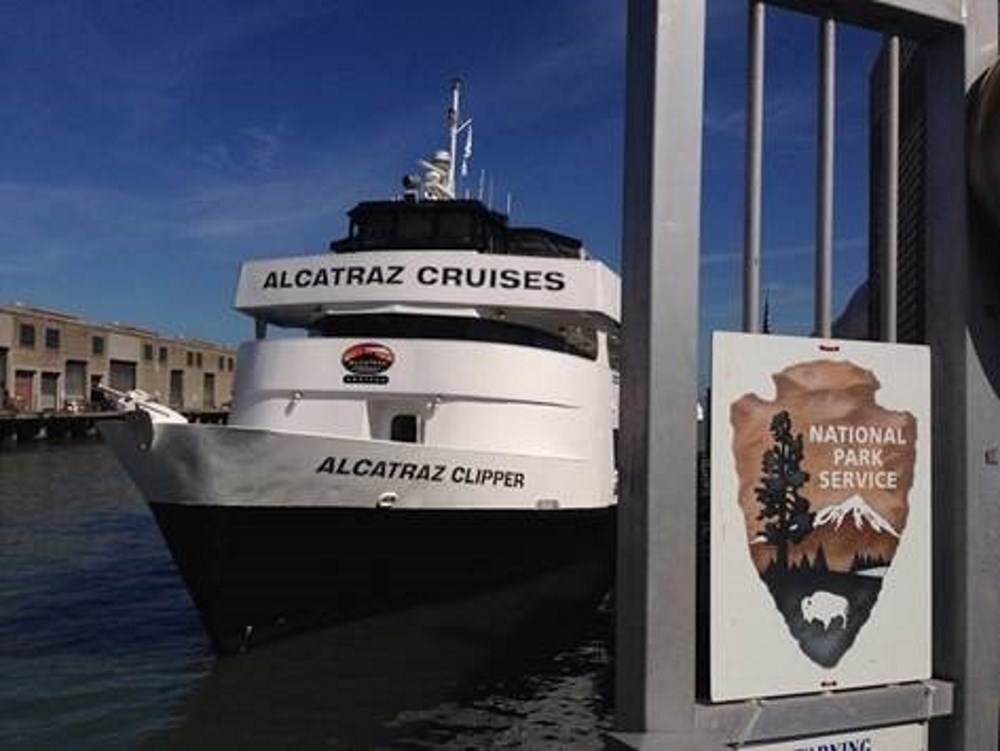Last updated: August 11, 2021
Article
Accessibility Compliance: Helping all visitors have a positive and rewarding experience at our venues

The National Park Service is now in year 4 of its 5-year Accessibility Strategic Plan. Although accessibility will always be a process of continuous improvement, this is a good time to assess what we are doing now to create a welcoming environment for all visitors.
A Brief History
1961 The American National Standards Institute (ANSI) adopted standards for barrier-free design.
ANSI standards were developed by a committee made up of 52 organizations representing associations of persons with disabilities, rehabilitation professionals, design professionals, builders and manufacturers using the concensus approach.
1968 The Architectural Barrier Act (ABA) was passed.
The ABA was one of the first laws passed by Congress to ensure access to the built environment for people with disabilities. Facilities that predate the law are generally not covered, but alterations or leases undertaken after the law took effect can trigger coverage. Four federal agencies are responsible for these standards
1973 Rehabilitation Act of 1973 enacted.
Under the Rehabilitation Act, the Architectural and Transportation Barriers Compliance Board (ATBCB) was established to enforce compliance with the ABA. The ATBCB, later renamed the U.S. Access Board, is a federal agency that promotes equality for people with disabilities through accessible design and accessibility guidelines and standards.
1978 Rehabilitation Act Amended.
The 1978 amendment to Section 502 of the Rehabilitation Act added to ATBCB's functions the responsibility to issue minimum guidelines and requirements, and added eleven public members to the Board, including five members of the disability community.
1984 Uniform Federal Accessibility Standards (UFAS) published.
The UFAS were designed to comply with the guidelines adopted by the ATBCB and the standards published by the ANSI. They are a set of uniform standards for the design, construction, and alteration of buildings so that persons with disabilities will have ready access to, and use of them, in accordance with the ABA.
The Americans with Disabilities Act (ADA) was signed into law on July 26, 1990. It is one of America's most comprehensive pieces of civil rights legislation. Accessibility law prohibits discrimination and guarantees that people with disabilities have the same opportunities as everyone else to participate in the mainstream of American life. The regulations that guide accessibility standards, as they apply to the National Park System, date back to 1961. See above for a brief history of those standards and regulations.
What is a Disability?
As defined by accessibility law, a disability is any “physical or mental impairment that substantially limits one or more major life activities of such individual.” Accessibility law ensures that a physical or mental disability should in no way diminish a person’s right to participate in all aspects of society.
In a 2016 survey across the United States, nearly one quarter of Americans consider themselves to have a disability. This is up from 1 in 5 Americans in 2012. The map below shows the prevalence of self-proclaimed persons with a disability across the 50 states in 2016.

Data Source: Behavioral Risk Factor Surveillance System (BRFSS)
The NPS 2015 5-year Accessibility Strategic Plan
The NPS initiated a 5-year Accessibility Strategic Plan in 2015 to improve its approach to making national parks more accessible and enjoyable for those with disabilities and their families. The plan encompasses a 3-tiered goal approach.
Download the full plan, All In! Accessibility in the National Park Service, 2015-2020.
Why Does This Matter?
The task force in charge of creating the Accessibility Strategic Plan estimated an annual revenue loss of $3.6 billion to parks, partners, concessioners, and gateway communities, due to lack of accessibility to visitors. Visitors with disabilities often come with friends and family and report their experiences back to other friends and family members. If an area is inaccessible to an individual with a disability, it is also unwelcoming to those accompanying them. By becoming aware of and addressing the top 3 complaints of visitors with disabilities, we can continue to improve our culture of continuous improvement towards accessibility.
Top 3 Concessioner Complaints Regarding Accessibility
#1 Restrooms
Restroom accessibility, as opposed to the cleanliness of the restroom, is the top complaint from visitors. Access to a restroom is a need everyone has. If someone can’t access a restroom, they can’t use it. Minimum accessibility standards, which include historical buildings that have public restrooms, mandate that there is at least one accessible toilet available.
#2 Parking
If accessible parking is not provided, visitors cannot come to your facility.
#3 Customer Service for those with Service Animals
Denying access to an individual with a service animal is considered discriminatory and makes the NPS vulnerable to civil rights complaints and lawsuits, as well as negative public perception. Individuals with disabilities rely on their service animals to remain independent and safe. Service animals are NOT pets. For many individuals with disabilities, separation from a service animal has the same effect as having a wheelchair or communication device taken away. For others, separation from a service animal can put the individual in danger.
While it is not a requirement to accommodate emotional support animals, it is a requirement to accommodate service animals. Service animals are not required to wear a vest, and come in all sizes, which can sometimes make it difficult to distinguish between a service animal and an emotional support animal.

What is a Service Animal?
A service animal is a dog (and in some cases a miniature horse) that has been trained to do work or perform tasks for the benefit of an individual with a disability. The task(s) performed by the animal directly relate to the person’s disability. A service animal is not required to be professionally trained or certified. Persons with disabilities have the right to train the animal themselves, and the NPS and its concessioners cannot require documentation (such as proof that the animal is certified, trained, or licensed as a service animal) as a condition for entry into park units and facilities.
How can Employees Determine if a Dog is a Service Animal?
Staff cannot:
- Inquire about the nature or extent of the person’s disability, including any questions about the person’s capabilities that relate to their disability;
- Require a person to show medical documentation or other proof of disability;
- Request any documentation or certification for the animal;
- Require or request that the animal demonstrate its task, work, or anything that it is trained to perform that relates to the visitor’s disability.
When it is not obvious that a dog is a service animal, staff may ask:
- Is the service dog required because of a disability?
- What work or task has the dog been trained to perform?
If it is necessary to ask these questions, please be cognizant of the tone used. Visitors should not feel hassled because they have a service animal. Remember this is the #3 complaint reported by visitors with disabilities!
By focusing on preventing these top complaints (showing respect and compassion for customers with service animals and ensuring accessible restrooms and parking), concessioners can do their part in welcoming all visitors to the parks.
National Accessibility Achievement Award!
The National Accessibility Achievement Award recognizes exemplary efforts by parks and concessioners that significantly improve accessibility for the range of visitors with disabilities to their programs, operations, and facilities within the National Park System. Concessioner efforts may address programmatic accessibility (access to programs and services) or physical building/architectural access. Successful projects demonstrate innovation, creativity, and success in providing more than just minimum requirements for accessibility.

Alcatraz Cruises is the most recent recipient of this award for development of a program to accommodate a variety of visitor needs. Some of the accessibility services Alcatraz Cruises offers include:
- American Sign Language (ASL) visitor videos on their website.
- Accessible parking at Pier 33 Alcatraz Landing.
- Braille displays and radio-controlled audio description technology at all interpretive exhibits.
- Special tram transport, aka SEAT (Sustainable Easy Access Tram), carries those with difficulty walking from the landing dock to the prison.
- Welcoming of visitors with service animals. Visitors are greeted at the Pier 33 Landing. Once a visitor introduces their service animal, all ferry and island staff are alerted so that the visitor is not approached by staff multiple times throughout their visit.
Alcatraz Cruises also provides staff training on accessibility, which includes speakers from deaf, blind, and mobility communities.
Do you think you have a program worthy of an award? The call for nominations is usually made in mid-summer. Nominees must complete the NPS National Accessibility Achievement Award Nomination Form.
